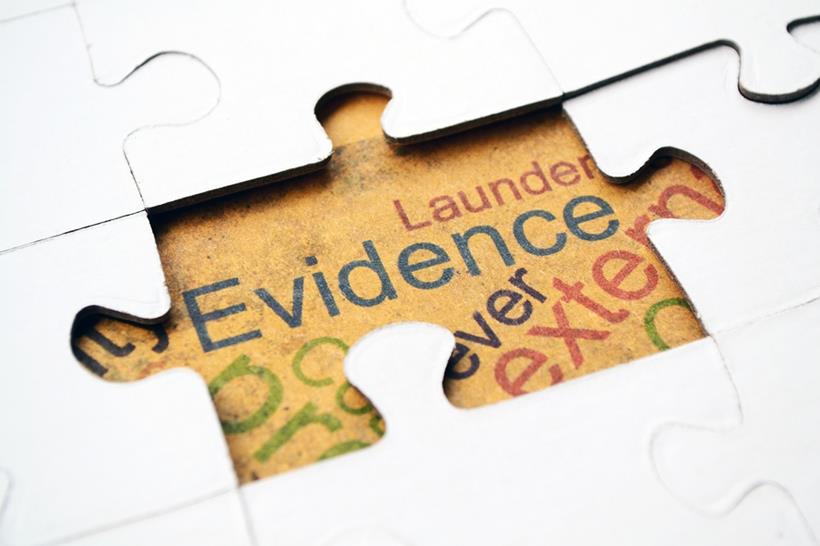
This article appeared in the May, 2013 issue of IQ – the Records and Information Management Professionals Australasia (RIM) Quarterly magazine. To download, click here: Embracing the Digital Future
The halls of Harvard University have a history of overcoming resistance to change. The factories of Yokohama are renowned for continuous improvement. Silicon Valley is where we look for technology innovation. And the Archives Offices of Canberra, Surrey, Washington or Pretoria have influenced business to recognise the benefits of metadata.
But where in Australia would you start a search for an organisation and individuals who have thought deeply about all these critical elements in recordkeeping, and achieved great success? The City of Shoalhaven on the beautiful southern NSW coastline, best known as stunning tourist destination, is unlikely to have come to mind, but that’s where we found another example of great progress in fully digital recordkeeping.
Shoalhaven City Council administers and provides services to a population of 96,000 people living in 49 towns and villages south of Sydney. It boasts 300,000 hectares of national parks and state forests, 109 beaches along 1,000 kilometres of coastline, and a wide range of businesses from manufacturing to tourism which caters for over 1.3 million visitors a year.
That makes the people, roads and tourism to care for on par with any large council in Australia. All in all, there are a lot of records to be kept in Shoalhaven.
Ros Ball is Shoalhaven’s current Records Manager. She first found her forte in records in 1998, and has embraced both the theoretical and technological aspects of the modern role, building up an impressive legacy of achievements. We caught up with Ros after her dynamic presentation at TUF 2012 where she spoke of Shoalhaven’s journey to achieving highly efficient and accurate data capture into an Electronic Document and Records Management System (EDRMS) using the latest in scanning software.
Resistance to Change
Back in 1998 the introduction of TRIM as the EDRMS was not smooth. Most people resisted the change in the way they had always done things. At that time Shoalhaven made the decision to start slowly, with the registration of physical records the priority. By 2001 they were ready to start turning digital.
“We have deliberately taken a slow approach to change. We let people know what the technology can do and what the future holds and give them a taste of what is possible. We show them the benefit and then wait for them to ask for it. When that happens, we drive the change.”
“When we started scanning in 2001 we actually waited until the technology caught up and delivered the benefits that we knew would make it easier for us to convince a reluctant audience.”
“We met resistance at each point of adoption of new technology. Resistance was expressed in many forms, from the familiar ‘That’s not the way I have done it before’ to the more specific, ‘It takes me more mouse clicks’.”
In change people are often more afraid of what they have to give up than what they have to learn new. People build myths around the use of TRIM as a means of defending why they do not want to change.
Ros and her team have had to systematically dismantle the myths in order to regain momentum to move on. For example, the myth existed that Shoalhaven’s records were much more secure in physical storage locations in hard copy than in TRIM in digital format. Dismantling that myth through demonstration of the security features for individual records and for locations and the benefits of an audit trail was necessary before progress could be made on scanning documents.
Ros has found over time that technology change has become easier for people. Much of this has come from the pervasive nature of smart phone and tablet technology in people’s lives outside of the Council.
“People are requesting mobile solutions for iPhone or ipad. These are people who have been negative about moving to a digital future, but can now visualise how the technology may fit into their work life.” That has increased the acceptance that change is the norm in the Council when it comes to recordkeeping,
Leveraging Technology
Shoalhaven City Council’s success is also a story of using technology to drive out errors. In what might be described as a lean manufacturing approach, continuous improvement in technology has been used specifically to achieve improved capture of metadata.
Ros states the records unit goal simply as, “To streamline our processes by using technology to enter data into a record.” Councils need to capture a lot of metadata from forms, which is mundane, high error work. Local governments have been pushed too achieve more with less and that premise drives Shoalhaven’s approach.
Over several years, and through a staged approach, the Council has transformed their methods of capturing forms by building more technology into the solutions coinciding with the maturing of their staff capability and willingness to accept new processes. Physical forms, once collected from various sites which took several days to be registered and processed and were error prone, are now web-based or OCR captured into TRIM from the point of receipt. Some of the records registration responsibility has been devolved leaving Ros and her team with time to work with business in other areas for improved efficiency.
The results go beyond the saving in Council staff time. For instance Ros says, “most Development application records are captured digitally and displayed on the web. Not only are we capturing them faster with fewer errors, but people do not have to come into the Council building now. This makes it more productive for everybody.
Making Metadata Important to all
Ros has an intrinsic understanding of the value of metadata that we have not often seen before. “Metadata is very important to us. If we can use technology to acquire metadata at source and in a standard format, we reduce errors, reduce waste, increase productivity and reduce risk. Getting the right metadata in consistent format enables us to have systems collaborate more easily which opens up the next frontier in innovation for us. It makes it easy for our customers and clients to deal with us.”
Ros is by nature, a passionate and vibrant personality with a delightful sense of humour. This has helped her in engaging with people on the mundane subject of metadata, and once she has gained their attention she’s taken every opportunity to educate people in the business on utilising metadata in the EDRMS. This change in people’s attention to elements of an EDRMS usually only of great interest to recordkeepers underlines the achievements of their approach to managing change.
Reframing compliance to get budget
In the past we’ve made it plain we believe too much reliance is placed on compliance with regulation as the rationale for convincing senior management teams to part with budget money. We believe that the records management fraternity need to be more knowledgeable and skilful in creating financial business cases based on reducing risk and increasing productivity. Ros had a twist on that premise which resonated loudly with us.
“I sell projects based on their ability to improve collaboration, reduce risk and reduce errors. However, I link all of those points to the legislation and regulations. I don’t shy away from compliance.”
“What I do say is that the laws are there for a reason; to protect us from increased risk, low levels of collaboration and unacceptable error rates. I reframe the law and its intent into real risks that our senior managers can recognise.”
“I show them, for example, that good metadata, which we are required by regulation to collect, reduces errors and allows for better decisions as all relevant information is as a result of good metadata easily discovered. I also show them that having good metadata saves time in finding records but more importantly saves time in making decisions and communicating them back to our customers and clients.”
At the same time as gaining approval for business cases and the required budget Ros is delivering powerful education to senior management on the legislation and how the EDRMS supports best practice delivery of services.
Future Challenges
So what does Ros believe the future technology challenges are for records management?
She sees system collaboration being on an endless path. “Technology will undoubtedly be more integrated. It will be like being in a mosh pit at a concert, with systems moving in rhythm with each other without any one system being in control”, Ros suggests. “There will be touch points between technologies whether you realise it or not or want it or not.”
Ros thinks this will have its advantages in that collaboration will be easier and data collection for records purposes easier. It will have its disadvantages in that keeping track of updates and their impact on other reliant technologies will take increased effort and focus until the technologies themselves are adapted to self-regulate their interconnectedness.
“Although mobile technology will not make us paperless it will make us more paperless. That’s a good thing. Capturing more data at source will further reduce variations and therefore reduce rework and cost to the Council and our customers and clients.”
Ros believes one of the biggest challenges will come from the ownership of data. Cloud computing will just be the way we do business. The difficulty that Ros sees is explained by her own rhetorical questions, “In that context, who owns a post I put onto the Council Facebook page? Do I own the post, or does Facebook own, or the Council or the cloud computing host? Every post is a record. Who owns the record?”
Not only is Ros concerned about ownership but also with jurisdiction as the Council, their client, the web site owner and the host are likely to be in different countries with different laws applying.
With the continued growth and commercial use of social media, Ros sees this as an issue which will need to be solved, but not by the innovators of Shoalhaven City Council alone.






